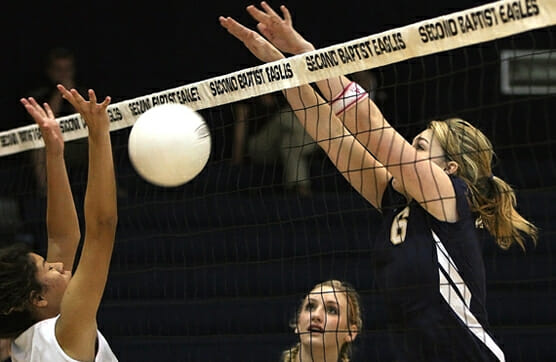Training the Female Athlete: Ask the Experts

Training the Female Athlete: Ask the Experts
When it comes to strength and conditioning, much of the attention is focused on the male athlete and in particular football. However, some strength and conditioning coaches prefer to work with female athletes for a variety of reasons, and over the course of their careers have developed great practical expertise in training the female athlete.
In this blog, two strength and conditioning coaches – Adam Ringler and Chase Campbell – share their insights on training the female athlete. Adam Ringler is entering his tenth year of coaching at the collegiate level. He is currently at the University of Colorado where he oversees strength and conditioning of the Buffs women’s basketball and volleyball teams. After spending the past few seasons with the WNBA Indiana Fever and Butler University, Chase Campbell recently accepted a position as the Director of Basketball Performance at the University of Rhode Island.
Motivational Tactics & Environment
Plain and simple, people respond differently to motivational tactics and the environments they encounter in everyday life. The same can be said for male and female athletes when it comes to training for sport, especially at the high school level.
Often times, female athletes have very little, if any, previous training experience when they get to high school because the importance of general physical preparation hasn’t quite been ingrained in them like it has with their male classmates perhaps due to misinformed beliefs (“I’ll get big and bulky”) that unfortunately still exist today. Thankfully that has begun to change, but it still takes a conscious effort to acclimate many female athletes to the weight room and training process.
Before we go any further, let’s be clear that it does not mean you have to “soften” things up or lower your expectations for your female athletes, it just means that you must be purposeful with how you motivate and mindful of the training atmosphere that you create. Screaming your lungs out and blaring derogatory music during a training session may work for a football teams’ training session (albeit completely unnecessary and not recommended), it is almost certain to appear hostile and unwelcoming to young female athletes who haven’t had much experience in a weight room.
Here are a few things to help engage and motivate the female athlete:
- Get to know them
- Find out what drives them
- Educate them on the benefits of strength training
- Show them examples of strong and powerful women training and competing
- Have the same expectations for them as you would for male athletes
Push the Envelope – Coach, Don’t Coddle
Due to their physiology, females can handle more training volume than males. Without getting too deep into the science, numerous studies have shown that women handle most training stressors (and stressors in general) better than men do. They are more fatigue resistant, handle higher rep ranges better, and can tolerate more metabolic stress than men. Sorry fellas, they’re better than we are in pretty much any way you can think of.
Given the above, don’t be afraid to push the envelope with training (of course, with adequate preparation and progressive overload – see below). They’ll handle it just fine. Likewise, do not be hesitant to hold them to high standards and demand those expectations. Our responsibility is to elevate their performance and coachability through personal responsibility, selflessness, sacrifice, and collective unity. Our job is to coach athletes, not coddle them.
 ACL Injury Prevention
ACL Injury Prevention
While coaches and fans love to watch the explosive attacks of outside hitters drilling a volleyball or a point guard on a breakaway lay-up explode towards the rim, performance coaches are watching how the female athlete jumps and lands. Although it may be tempting to continue to develop more explosive athletes, it can be a recipe for injury if they don’t have a strategy for landing and absorbing the impact of an explosive jump.
It is well-established that female athletes on average have a 3.5 times greater risk for sustaining non-contact ACL injuries compared with males. With that said, it is important that training programs for the female athlete takes into account the increased risk of ACL knee injury that includes a significant amount of frontal plane strength, single-leg hinging and squatting, and teaching and training of proper jumping and landing along with acceleration, deceleration and change of direction mechanics.
All Good Things In Time
As mentioned above, don’t be afraid to push the female athlete in the weight room; however, it is vitally important that you don’t rush to develop them too quickly at the expense of foundational movements – squat, lunge, hinge, jump, land, etc. that should be taught unloaded (body weight) and progressed in load, intensity, and complexity.
Like your mother’s cooking, the best things are slow cooked not microwaved. It is important to establish a movement literacy while providing consistent repetitions and feedback for athletes to learn and develop new movement patterns before undertaking advanced programming and more intense training.
Related Blogs
3 things every high school coach should know about training the female athlete